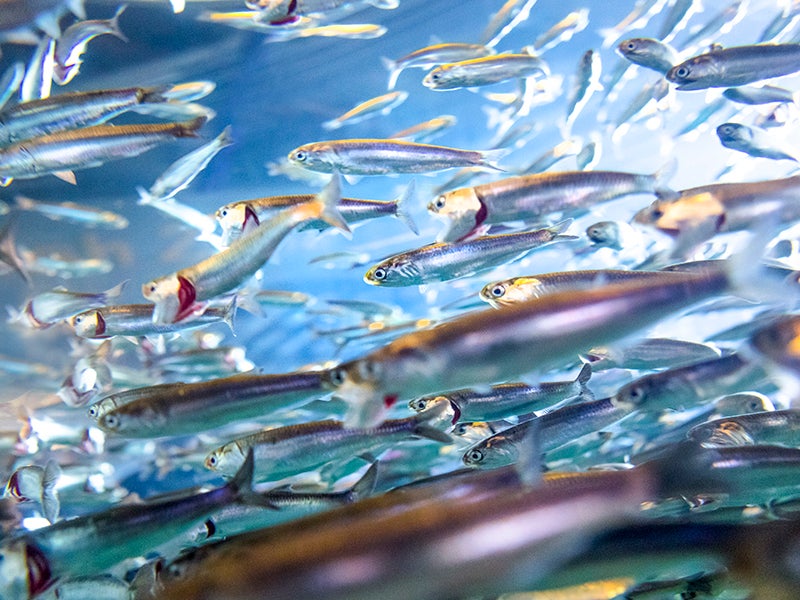Court Orders Fisheries Service to Issue New Anchovy Catch Limit within 90-days
Victory
—Anchovies are a critically important food fish for larger ocean predators including whales, sea lions, salmon, and brown pelicans.
Contact
Yesterday, a federal judge is directing the National Marine Fisheries Service to promulgate a new federal rule establishing a new catch limit for northern anchovy that complies with the U.S. fisheries management law — the Magnuson-Stevens Act — to prevent overfishing. The court has directed the Fisheries Service to do this within 90-days of the Court’s Order, which is Thursday, April 18, 2019.
“It’s time to bring anchovy management into the 21st century by updating catch limits each year to reflect real-time abundance data rather than a decades-old guesstimate,” said Andrea Treece, Earthjustice attorney who litigated the case. “Instead of burying its own science and fighting its legal obligations, the Fisheries Service should simply use the data it collects every year to calculate up-to-date catch limits that protect both the anchovy population and the many ocean fish and wildlife species that depend on it.”
The Fisheries Service has avoided using the best available science to establish catch limits for the central sub-population of northern anchovy — a critically important food fish for larger ocean predators including whales, sea lions, salmon, and brown pelicans. Anchovy populations go can through rapid “boom and bust” cycles. For example, the anchovy population at issue reached the highest levels in decades in 2005, then rapidly crashed by more than 99 percent to historic lows. That population crash lasted through 2016 and resulted in starvation, breeding failures, and death of thousands of pelicans, sea lions, and other marine wildlife.
“The National Marine Fisheries Service has avoided its legal obligation to sustainably manage one of the ocean’s most important fish species for way too long,” said Mariel Combs, Oceana’s Senior Pacific Counsel. “This most recent court ruling was necessary to force the agency to finally establish a science-based catch rule to benefit fishermen and marine life.”
With the commercial sardine fishery closed for the last four years, anchovy have become an increasingly targeted commercial species. In October 2016, the Fisheries Service issued a federal rule establishing a 25,000 metric ton (mt) catch limit based upon a 1991 model that estimated the stock population using data from 1964 to 1990, and put the anchovy biomass at more than 700,000 mt. However, the Fisheries Service’s own estimates of the 2015 population size ranged from just 15,000 mt to 32,000 mt, resulting in a catch limit that could have exceed the entire anchovy population. The court’s ruling makes it clear that the Fisheries Service must establish catch limits based on best available science and cannot continue to postpone managing this fishery. This will ultimately require federal fishery managers to move to real time management of this important forage species.
Background
The 25,000 mt catch limit proposed by the Fisheries Service in 2016 could have exceeded the entire estimated population of anchovy at that time. In response, Oceana filed a lawsuit, represented by Earthjustice, in November 2016 challenging the proposed 25,000 mt catch limit on the grounds that the federal agency dismissed multiple scientific sources indicating this catch level could exceed the entire anchovy population. A federal judge ruled in Oceana’s favor in January 2018 that the Fisheries Service must use the best available science when establishing catch limits for the central sub-population of northern anchovy to prevent overfishing. In response to the judge’s January 2018 decision, the Fisheries Service asked the judge to limit the ruling to the annual catch limit, which might have allowed the agency to continue avoiding consideration of allowable biological catch and overfishing limit — two important management measures related to preventing overfishing of anchovy and to providing enough food for predators dependent on anchovy. In June 2018, the federal judge confirmed her January 2018 decision requiring the agency to update all of the measures based on the best available science. Since then, the Fisheries Service has yet to publish a new rule in accordance with the court’s orders, prompting Oceana and Earthjustice to file a motion to enforce. This latest court order found that the agency’s failure to issue a new rule violates the law and requires the Fisheries Service to meet its legal obligation by April 18, 2019.

Additional Resources
About Earthjustice
Earthjustice is the premier nonprofit environmental law organization. We wield the power of law and the strength of partnership to protect people's health, to preserve magnificent places and wildlife, to advance clean energy, and to combat climate change. We are here because the earth needs a good lawyer.